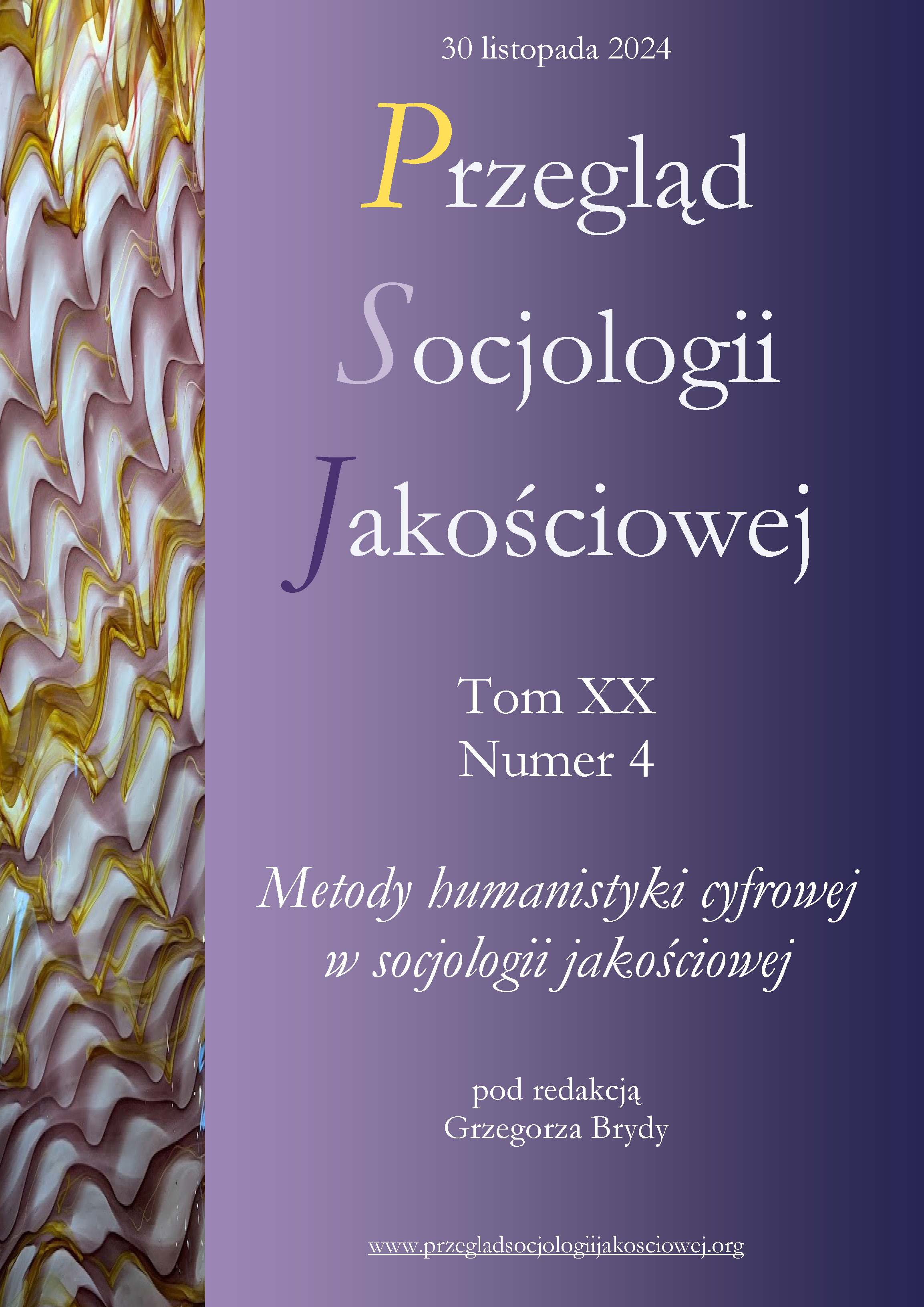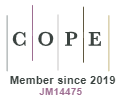Shadowing jako metoda badania doświadczeń muzealnych osób z niepełnosprawnościami: w kierunku kompleksowego projektu multimodalnego
DOI:
https://doi.org/10.18778/1733-8069.20.4.12Słowa kluczowe:
projektowanie uniwersalne, technologie wspomagające, multimodalność, niepełnosprawność, dostępnośćAbstrakt
Artykuł ukazuje wyzwania związane z zapewnieniem dostępności muzeów dla osób odwiedzających z różnymi niepełnosprawnościami. Analiza objęła strategie wdrażania technologii i uniwersalnego designu, aby poprawić dostępność przy zachowaniu wartości estetycznych i informacyjnych. W badaniu ukazano multimodalność jako obiecujące rozwiązanie integrujące różne formy odbioru w zbiorach muzealnych. Badania przeprowadzone w Muzeum Czartoryskich, oddziale Muzeum Narodowego w Krakowie, zebrały doświadczenia i opinie odwiedzających z niepełnosprawnościami na temat dostępnych rozwiązań. Wyniki badań pokazują, że nowoczesne muzea powinny oferować wiele kanałów dostępu, aby sprostać różnym potrzebom, umożliwiając odwiedzającym efektywne korzystanie z zasobów. Ponadto zaangażowanie osób z niepełnosprawnościami w ocenę i współtworzenie rozwiązań jest kluczowe, ponieważ ich wkład dostarcza cennych i konstruktywnych spostrzeżeń. Wskazuje to na konieczność podejmowania działań na rzecz inkluzywności, co może przyczynić się do redefinicji strategii dostępności w muzeach na całym świecie.
Pobrania
Bibliografia
Ailisto Heikki, Plomp Johan, Pohjanheimo Lauri, Strömmer Esko (2003), A Physical Selection Paradigm for Ubiquitous Computing, https://www.researchgate.net/publication/220774875_A_Physical_Selection_Paradigm_for_Ubiquitous_Computing [accessed: 15.08.2024].
Google Scholar
DOI: https://doi.org/10.1007/978-3-540-39863-9_28
Bartkowiak-Theron Isabelle, Sappey Jennifer Robyn (2012), The methodological identity of shadowing in social science research, “Qualitative Research Journal”, vol. 12(1), pp. 7–16.
Google Scholar
DOI: https://doi.org/10.1108/14439881211222697
Bellotti Francesco, Berta Riccardo, De Gloria Alessandro, Margarone Massimiliano (2003), Supporting Efficient Design of Mobile HCI, [in:] Luca Chittaro (ed.), Human Computer Interaction with Mobile Devices and Services, Berlin–Heidelberg: Springer, pp. 241–255, https://link.springer.com/chapter/10.1007/978-3-540-45233-1_18 [accessed: 15.08.2024].
Google Scholar
DOI: https://doi.org/10.1007/978-3-540-45233-1_18
Bryant Diane Pedrotty, Bryant Brian (2003), Assistive Technology for People with Disability, Boston: Pearson Education.
Google Scholar
Cock Matthew, Bretton Molly, Fineman Anna, France Richard, Madge Claire, Sharp Melanie (2018), State of Museum Access: Does Your Museum Website Welcome and Inform Disabled Visitors?, http://vocaleyes.co.uk/state-of-museum-access-2018 [accessed: 3.06.2021].
Google Scholar
Del Chiappa Giacomo, Andreu Luisa, Gallarza Martina G. (2014), Emotions and visitors’ satisfaction at a museum, “International Journal of Culture, Tourism and Hospitality Research”, vol. 8(4), pp. 420–431.
Google Scholar
DOI: https://doi.org/10.1108/IJCTHR-03-2014-0024
Dubiel Monika (2020), Together or Separated? The Segregative and Integrative Model of Cultural Accessibility for Persons with Disability, “Studia Humanistyczne AGH”, vol. 19(3), pp. 139–156, https://doi.org/10.7494/human.2020.19.3.139
Google Scholar
DOI: https://doi.org/10.7494/human.2020.19.3.139
Eardley Alison, Mineiro Clara, Ride Peter, Neves Joselia (2016), Redefining Access: Embracing multimodality, memorability and shared experience in Museums, “Curator: The Museum Journal”, vol. 59(3), pp. 263–286.
Google Scholar
DOI: https://doi.org/10.1111/cura.12163
Gawron Grzegorz (2015), Universal Design – Projektowanie uniwersalne jako idea w dążeniu do osiągania partycypacji społecznej osób niepełnosprawnych, „Roczniki Nauk Społecznych”, vol. 43(1), pp. 125–144.
Google Scholar
DOI: https://doi.org/10.18290/rns.2015.7(43).1-9
Goldberg Larry (2010), Exhibit Design Relating to Low Vision and Blindness: Current Media Technology, Appropriate Application of Technology, Future Research Needs, “White Paper”, Bloomington: Indiana University.
Google Scholar
Jiménez Hurtado Catalina, Seibel Claudia, Soler Gallego Silvia (2012), Museums for all. Translation and Interpreting for Multimodal Spaces as a Tool for Universal Accessibility, https://rua.ua.es/dspace/bitstream/10045/26955/1/MonTI_04_16_trans.pdf [accessed: 3.06.2022].
Google Scholar
Kelly Lynda (2004), Evaluation, research and communities of practice: Program evaluation in museums, “Archival Science”, vol. 4(1–2), pp. 45–69.
Google Scholar
DOI: https://doi.org/10.1007/BF02390852
Kress Gunther (2010), Multimodality: A Social Semiotic Approach to Contemporary Communication, London: Routledge.
Google Scholar
Kriegstein Katharina von, Giraud Anne-Lise (2006), Implicit multisensory associations influence voice recognition, “PLoS Biology”, vol. 4(10), pp. 326–327.
Google Scholar
DOI: https://doi.org/10.1371/journal.pbio.0040326
Lehmann Sandra, Murray Micah M. (2005), The role of multisensory memories in unisensory object discrimination, “Cognitive Brain Research”, vol. 24(2), pp. 326–334.
Google Scholar
DOI: https://doi.org/10.1016/j.cogbrainres.2005.02.005
McDonald Seonaidh (2005), Studying actions in context: a qualitative shadowing method for organizational research, “Qualitative Research”, vol. 5(4), pp. 455–473, https://doi.org/10.1177/1468794105056923
Google Scholar
DOI: https://doi.org/10.1177/1468794105056923
McManus Paulette M. (1993), Memories as indicators of the impact of museum visits, “Museum Management and Curatorship”, vol. 12(4), pp. 367–380.
Google Scholar
DOI: https://doi.org/10.1016/0964-7775(93)90034-G
Murray Micah M., Molholm Sophie, Michel Christoph M., Heslenfeld Dirk J., Ritter Walter, Javitt Daniel C., Schroeder Charles E., Foxe John J. (2005), Grabbing your ear: rapid auditory – somatosensory multisensory interactions in low-level sensory cortices are not constrained by stimulus alignment, “Cerebral Cortex”, vol. 15(7), pp. 963–974.
Google Scholar
DOI: https://doi.org/10.1093/cercor/bhh197
Nyberg Lars, Habib Reza, McIntosh Anthony R., Tulving Endel (2000), Reactivation of encoding-related brain activity during memory retrieval, “Proceedings of the National Academy of Sciences”, vol. 97(20), pp. 11120–11124, https://doi.org/10.1073/pnas.97.20.11120
Google Scholar
DOI: https://doi.org/10.1073/pnas.97.20.11120
Osterman Mark (2017), Accessibility and Technology: Developing a Virtual Access Tour, MW17: Museums and the Web, https://mw17.mwconf.org/paper/accessibility-and-technology-developing-a-virtual-access-tour/ [accessed: 3.06.2022].
Google Scholar
Parzyńska Iwona, Żuchowska-Skiba Dorota, Cichy Beata, Gajoch Paulina (2023), Pułapki (nie)dostępności – muzeum w dobie nowoczesnych technologii: na przykładzie Muzeum Narodowego w Krakowie, [in:] Grzegorz Całek, Jakub Niedbalski, Mariola Racław, Marta Sałkowska, Joanna Sztobryn-Giercuszkiewicz, Dorota Żuchowska-Skiba (eds.), Niepełnosprawność i edukacja, Łódź: Wydawnictwo Uniwersytetu Łódzkiego, pp. 163–177.
Google Scholar
DOI: https://doi.org/10.18778/8331-115-9.10
Pine Joseph B., Gilmore James H. (1998), Welcome to the experience economy, “Harvard Business Review”, vol. 76, pp. 97–105.
Google Scholar
Quinlan Elizabeth (2008), Conspicuous invisibility: Shadowing as a data collection strategy, “Qualitative Inquiry”, vol. 14(8), pp. 1480–1499.
Google Scholar
DOI: https://doi.org/10.1177/1077800408318318
Rappolt-Schlichtmann Gabrielle, Daley Samantha G. (2013), Providing access to engagement in learning: The potential of Universal Design for Learning in museum design, “Curator: The Museum Journal”, vol. 56(3), pp. 307–321.
Google Scholar
DOI: https://doi.org/10.1111/cura.12030
Rizzo Alessandra (2019), Museums as disseminators of niche knowledge: Universality in accessibility for all, “Journal of Audiovisual Translation”, vol. 2(2), pp. 92–136.
Google Scholar
DOI: https://doi.org/10.47476/jat.v2i2.93
Ruiz Belén, Pajares José Luis, Utray Francisco, Moreno Lourdes (2011), Design for All in multimedia guides for museums, “Computers in Human Behaviour”, vol. 27(4), pp. 1408–1415.
Google Scholar
DOI: https://doi.org/10.1016/j.chb.2010.07.044
Sandell Richard (1998), Museums as agents of social inclusion, “Museum Management and Curatorship”, vol. 17(4), pp. 401–418.
Google Scholar
DOI: https://doi.org/10.1016/S0260-4779(99)00037-0
Santoro Carmen, Paternò Fabio, Ricci Giulia, Leporini Barbara (2007), A multimodal Mobile Museum Guide for All, Workshop on Mobile Interaction with the Real World (MIRW 2007), pp. 21–25, https://www.researchgate.net/publication/228569329_A_multimodal_mobile_museum_guide_for_all [accessed: 15.08.2024].
Google Scholar
Seitz Aaron R., Kim Robin, Shams Ladan (2006), Sound facilitates visual learning, “Current Biology”, vol. 16(14), pp. 1422–1427.
Google Scholar
DOI: https://doi.org/10.1016/j.cub.2006.05.048
Shakespeare Tom (2008), The social model of disability, [in:] Lennard J. Davis (ed.), The Disability Studies Reader, New York–London: Routledge, pp. 214–221.
Google Scholar
Steinfeld Edward, Maisel Jordana (2010), Advancing universal design. The state of the science in universal design: emerging research and development, Buffalo: State University of New York, Bentham eBooks, s. 1–19.
Google Scholar
DOI: https://doi.org/10.2174/978160805063511001010001
Story Molly F., Mueller James L., Mace Ronald L. (1998), The universal design file: Designing for people of all ages and abilities, Raleigh: Center for Universal Design – North Carolina State University.
Google Scholar
Weele Simon van der, Bredewold Femmianne (2021), Shadowing as a qualitative research method for intellectual disability research: Opportunities and challenges, “Journal of Intellectual & Developmental Disability”, vol. 46(4), pp. 340–350.
Google Scholar
DOI: https://doi.org/10.3109/13668250.2021.1873752
Wyman Bruce, Timpson Corey, Gillam Scott, Bahram Sina (2016), Inclusive design: From approach to execution, https://mw2016.museumsandtheweb.com/paper/inclusive-design-from-approach-to-execution/ [accessed: 20.09.2024].
Google Scholar
Pobrania
Opublikowane
Wersje
- 2024-11-30 - (2)
- 2024-11-30 - (1)
Jak cytować
Numer
Dział
Licencja

Utwór dostępny jest na licencji Creative Commons Uznanie autorstwa – Użycie niekomercyjne – Bez utworów zależnych 4.0 Międzynarodowe.














